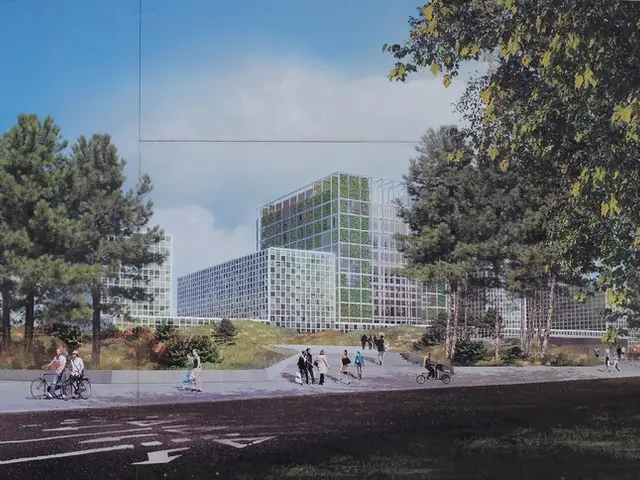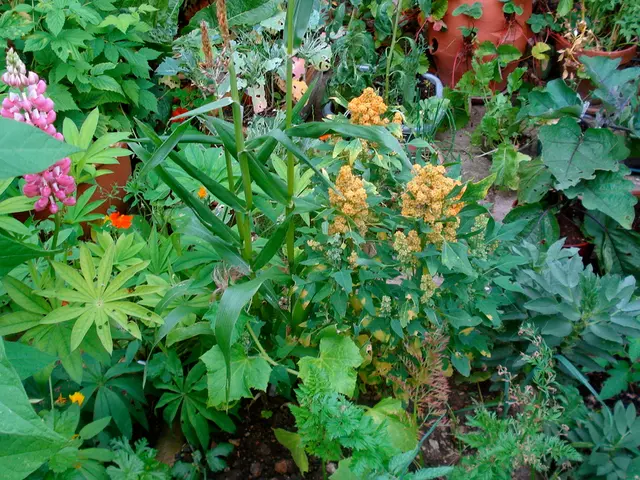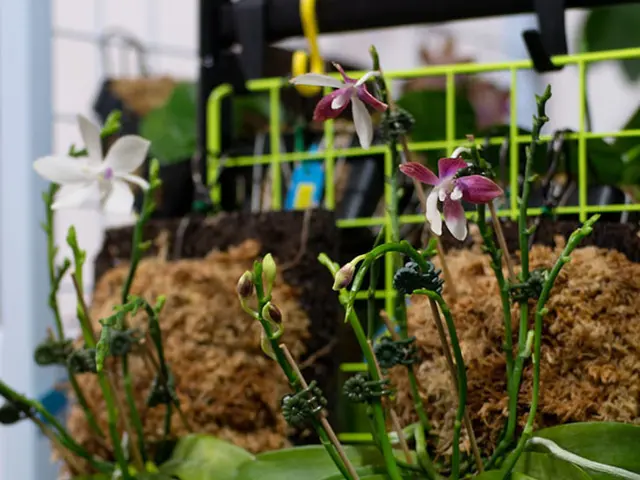Transform a Minuscule Outdoor Area Into a Thriving Greenspace: Follow These 10 Steps for a Stunning Small Garden
Designing a Small Garden: Expert Advice on Maximizing Space and Achieving a Pleasing Outdoor Haven
As urban living spaces continue to shrink, designing a small garden can be a challenging yet rewarding endeavor. Here, we share invaluable tips from award-winning garden designers on how to transform your petite outside space into a visually appealing, functional living area that serves your needs.
Step 1: Define Your Goals and Priorities
The first step to a successful small garden design is to identify what you want to use the space for. Whether it's for entertaining, relaxing, or growing vegetables, understanding your objectives will guide the composition of your garden. Remember, the more specific your vision, the easier it will be to create a harmonious and practical space.
Step 2: Analyze Your Garden's Aspect
The orientation of your garden, be it north, south, east, or west, significantly affects the amount and quality of sunlight it receives. This, in turn, will influence the types of plants you can grow and the best placement of seating and dining areas. Taking the time to evaluate your garden's aspect will enable you to develop a workable layout and planting scheme.
Step 3: Plan Your Space with a Site Survey
Just as you wouldn't buy furniture before measuring your room, equally important is knowing the exact dimensions of your small garden. Conducting a thorough site survey will provide valuable insights into the space's potential, allowing you to create a well-proportioned and functional plan. Monitor access points, especially in apartments or terraced homes, to ensure all materials and equipment can come through the house.
Step 4: Set a Realistic Budget
With a wide array of attractive garden features, furniture, and plants available, it's easy to overspend on your dream garden. Set a budget early on in the planning process, taking into consideration the costs of labor, materials, and maintenance. Decide whether there are tasks you can tackle yourself or whether professional help is required.
Step 5: Plant Strategically
In a small garden, every square inch matters. Instead of squeezing narrow flower beds against the perimeter, consider creating wider planting areas to accommodate larger, shape-defining plants. This approach will not only result in a more flourishing garden, but will also help to create a sense of intimacy and coziness.
Step 6: Design for Indoor-Outdoor Flow
Blurring the lines between your home and garden can make a small outdoor area appear larger. By employing similar materials, colors, and design elements inside and out, you create a harmonious and seamless transition between the two spaces. Choose large-format pavers or decking, maintain consistent color palettes, and ensure dry access to washing lines and garden buildings.
Step 7: Utilize Vertical Space for Privacy
With neighbors' windows and minimal green space often surrounding urban gardens, creating privacy is essential. Incorporating structures such as pergolas, arches, or trellises offers effective shelter while adding visual interest. Strategic placement of climbing plants or pleached trees can also help obscure unwanted views.
Step 8: Select the Right Outdoor Furniture
Opt for furniture that complements the style and scale of your garden, without overwhelming the space. Modern, lightweight pieces are ideal for small gardens, offering both style and practicality. Don't forget the importance of a statement piece for a focal center.
Step 9: Establish a Statement Area or Corner
Creating a visual focal point, such as a statue, fountain, or architectural plant, helps draw the eye and create depth in the garden. A striking centerpiece elevates the garden and provides a pleasing view for both you and your guests.
Step 10: Focus on Appropriate Plants
Choosing plants that flourish in the particular conditions of your garden – soil type, shelter, and sunlight – is crucial for a healthy, beautiful outdoor space. Consult expert gardeners or conduct online research to ensure you're selecting plants that thrive in your backyard.
By following these expert tips, you'll be well on your way to designing a unique, charming, and functional small garden that you'll love spending time in. Happy gardening!
Authority: Garden designers, Sarah Kay and Kate Gould, RHS Chelsea Flower Show medalists Manoj Malde and Sarah Kay Garden Design, and Capel Manor college.
- For a cohesive and practical small garden design, consider the texture of flooring materials to match your interior design or home-and-garden lifestyle, ensuring a seamless flow between indoor and outdoor spaces.
- To create an artful and personalized living area within your garden, select bright or unique colors for structures, mirrors, or tiles that mirror the style of your furniture and the preferred color palette of your home.
- Growing vegetables or maintaining a kitchen garden will require a deliberate selection of plants that fit the soil, sunlight, and sheltered conditions of your space. This focus on appropriate plants further enhances your garden's overall visual appeal.
- To maximize the beauty and functionality of a small-space garden, embrace gardening principles by strategic placement of plants, multi-layered planting techniques, and efficient use of vertical spaces to cultivate diverse flora and maintain privacy.
- Incorporating elements such as mirrors, art, or decorative tiles in your garden can serve to draw attention to specific areas, creating visual interest and adding a touch of elegance to your outdoor haven.
- The implementation of outdoor furniture should follow the same principles as your indoor space – complementary style, color coordination, and appropriate size that harmoniously fits within your garden's defined space, while still providing functionality and comfort.






